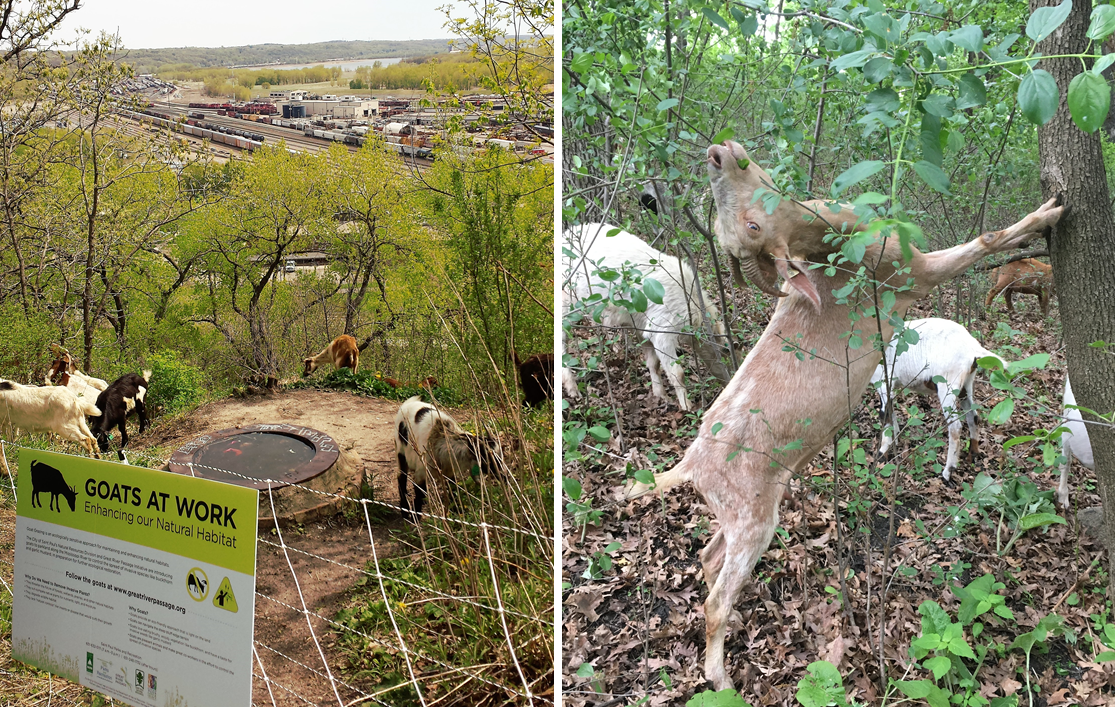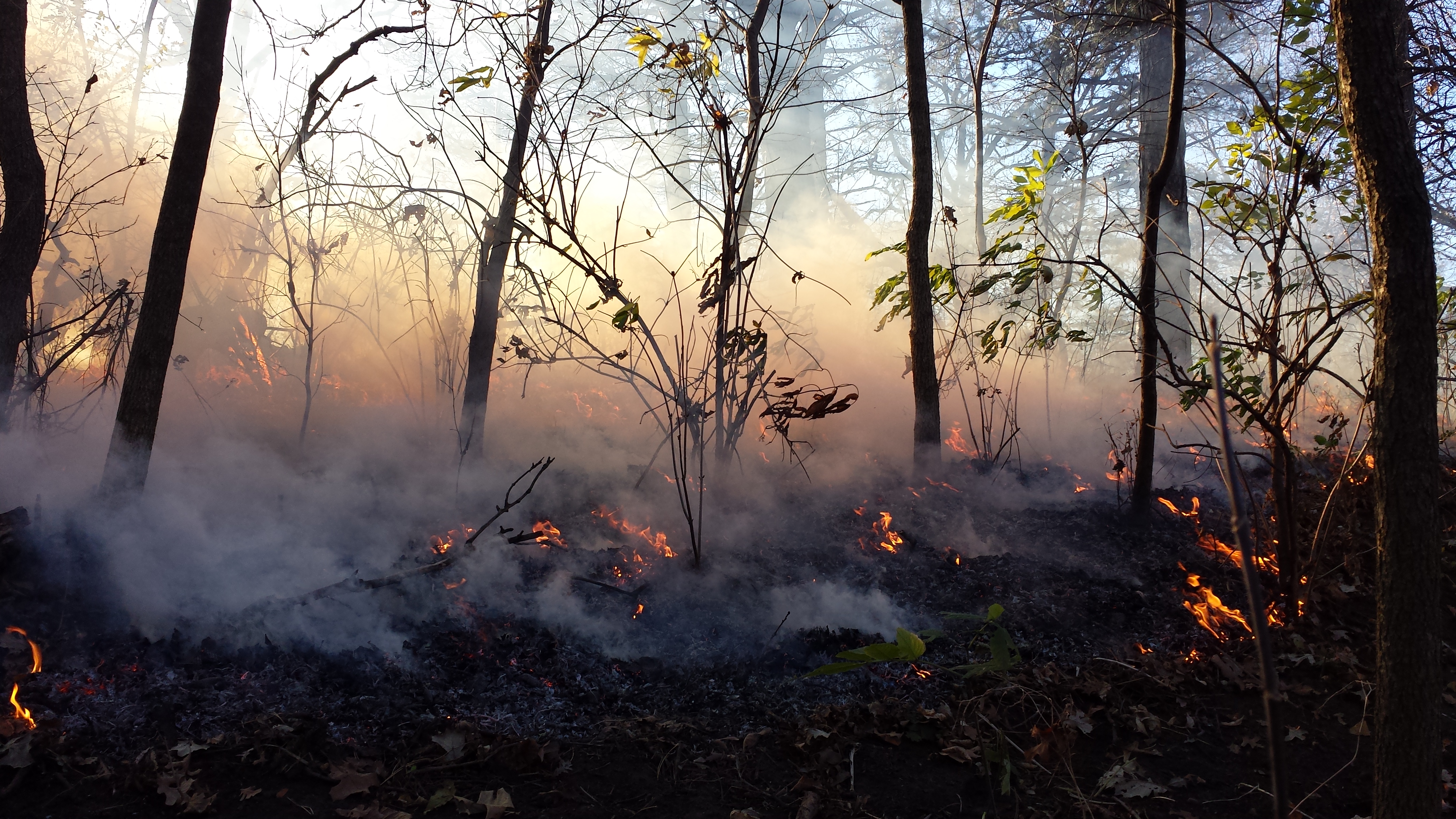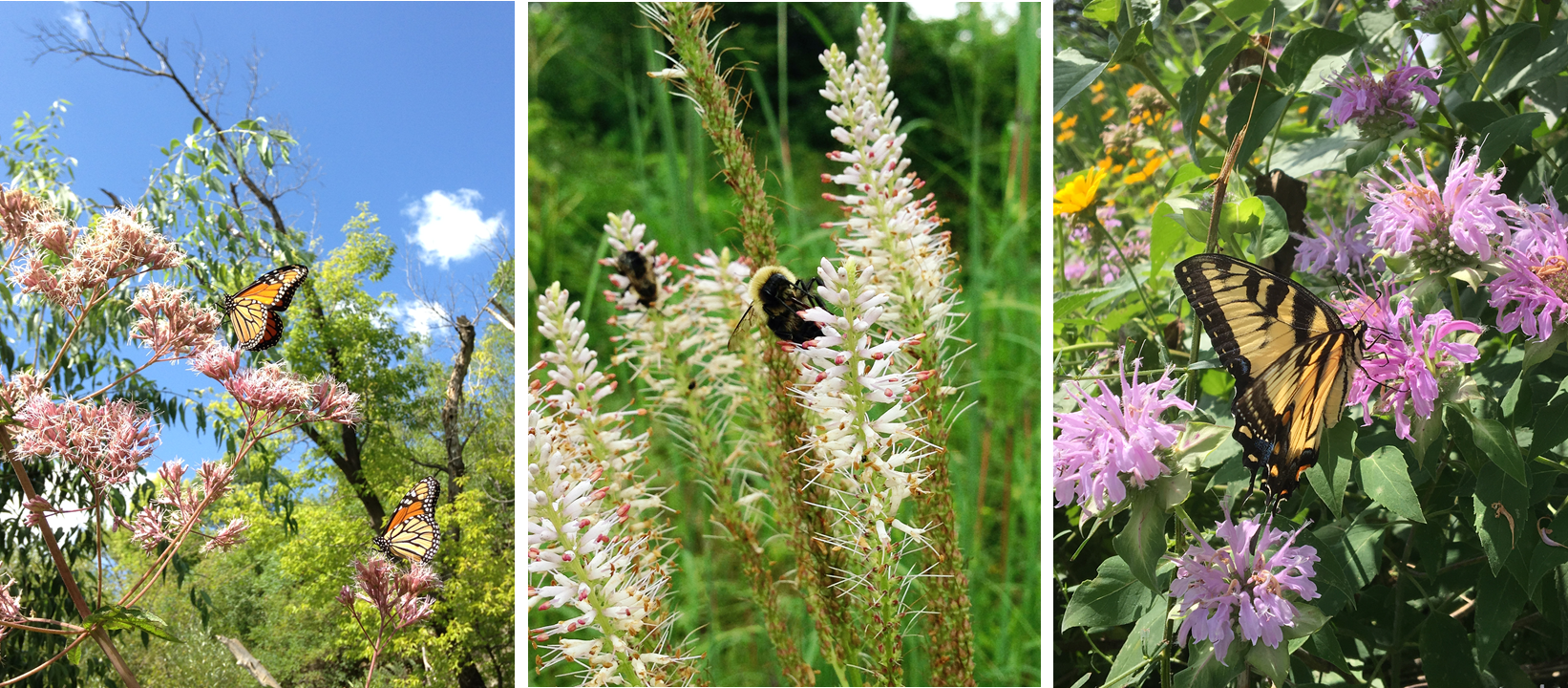Habitat Management Techniques
How does…
- A buckthorn monoculture become a diverse woodland?
- A weedy patch of grass become a prairie?
- A parking lot become an oasis for pollinators?
Read on to learn about exciting and effective ways Saint Paul natural areas are restored.
-
Goats were introduced to manage invasive species at the scenic and historic Indian Mounds and Crosby Farm Regional Parks in 2017 and 2018.
The goats were fenced-in to areas where invasive species like common buckthorn were degrading the habitat. The goats roamed and munched at each park twice a year, once in the spring and once in the fall.
Goats serve as a cost-effective, environmentally friendly way to control the spread of invasive species throughout the landscape. They munch relentlessly on small buckthorn seedlings. They can climb and bend taller trees to reach foliage and eat the bark. After multiple rounds of grazing the goats set back invasive species, which releases native plants from intense competition. In the long-run, the grazing will help to improve wildlife habitat and allow the native plant community to thrive.

-
Sign up for prescribed burn notifications at the bottom of the page.
Sign up forSSFire is a natural part of many Minnesota ecosystems including prairies, oak savannas, and woodlands. It reduces the buildup of dead vegetation, recycles nutrients into the soil, and improves or maintains a site’s ecological functioning.
Wildfire was historically common, but does not naturally occur in today’s urban parks. So, land managers often prescribe burns to mimic this natural process that managed the land for thousands of years.
Fire is also an effective and low-cost tool to set back many common invasive plants. This is especially true for preventing the spread of woody species like buckthorn into the prairie plant community.
Prescribed burn location is based on ecological need. For prairies, burns usually occur once every three years. A burn plan is drafted and reviewed by Saint Paul Fire and Safety and the Minnesota DNR. When weather and other conditions are favorable for a safe, well-controlled, and effective fire, trained staff can initiate the prescribed burn.
Staff receive training from the Minnesota DNR to ensure responsible performance of prescribed burns.

-
A raingarden is a bowl-shaped garden filled with vegetation that allows stormwater and polluted runoff to filter slowly into the ground.
Before humans extensively developed the land, rainwater fell to the ground and was naturally absorbed by soil and plants. Today cities like Saint Paul are covered with impervious surfaces like pavement, concrete, and roofs. Water that moves across these surfaces picks up pollutants such as sediment, motor oil, fertilizer, and chemicals. Without porous ground to filter into, this polluted water enters storm drains, eventually reaching nearby lakes, streams, and rivers and damaging the aquatic environment.
Raingardens are beneficial because they capture stormwater runoff before entering storm sewers and polluting our valuable water resources, such as Lake Phalen, Como Lake, and the Mississippi River. They also reduce the amount of water that enters the stormwater system, especially during heavy rain events.

Raingardens are often planted with native perennial plants, which have long roots that reduce soil compaction and increase water filtration. They even break down pollutants and absorb excess nutrients, which prevents them from entering bodies of water and improves soil health. These plants provide wildlife habitat for pollinators, birds, and others.

If you are interested in learning more about rain gardens, including how you can build one on your property, please visit the following resources:
- The Capitol Region Watershed District can help to install rain gardens on private property with their cost-share program.
- The Ramsey-Washington Metro Watershed District offers a cost-share program to assist with projects that improve the water quality of the District.
- The Ramsey County Soil & Conservation division offers free technical assistance in addition to rain garden cost-sharing.